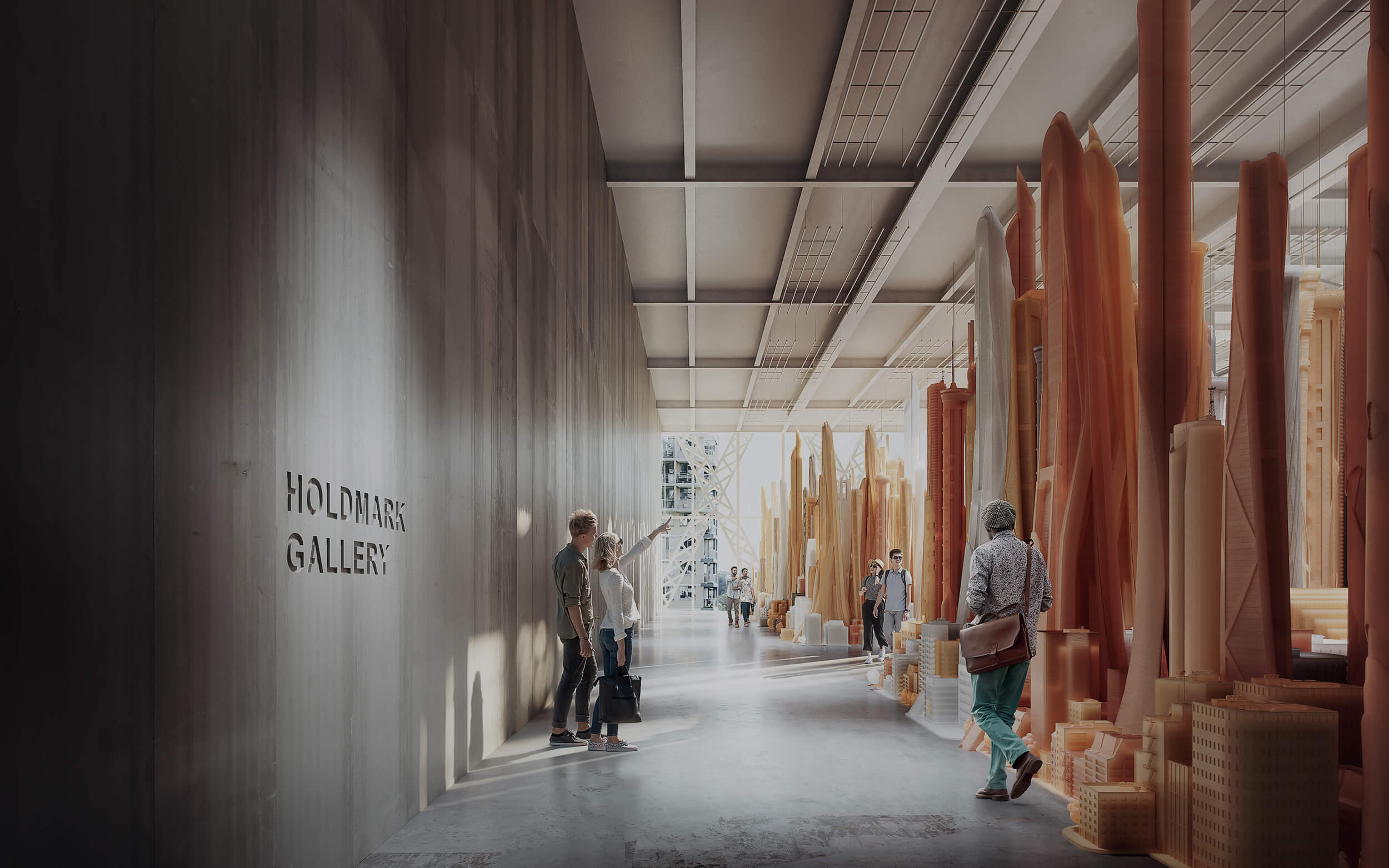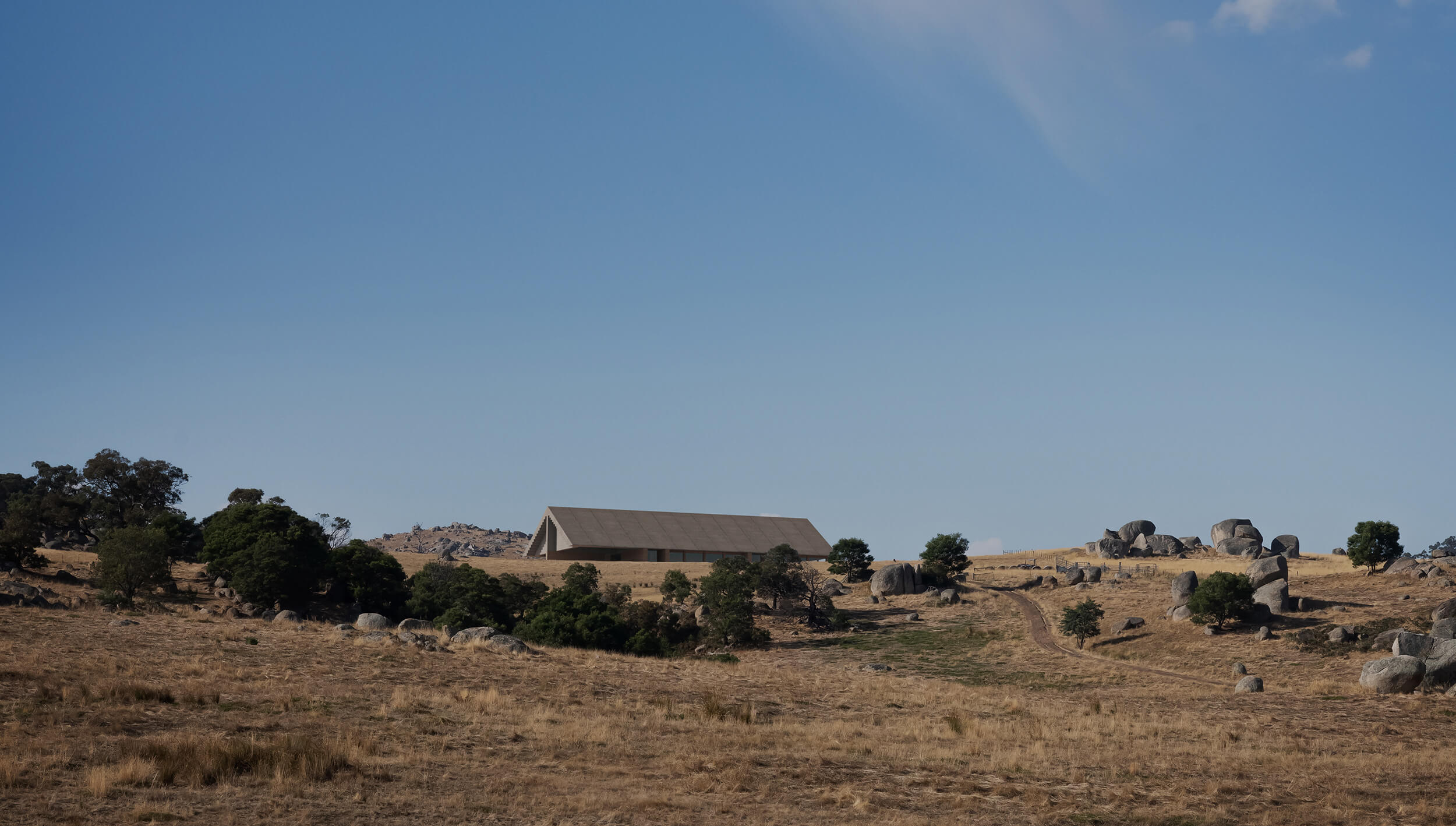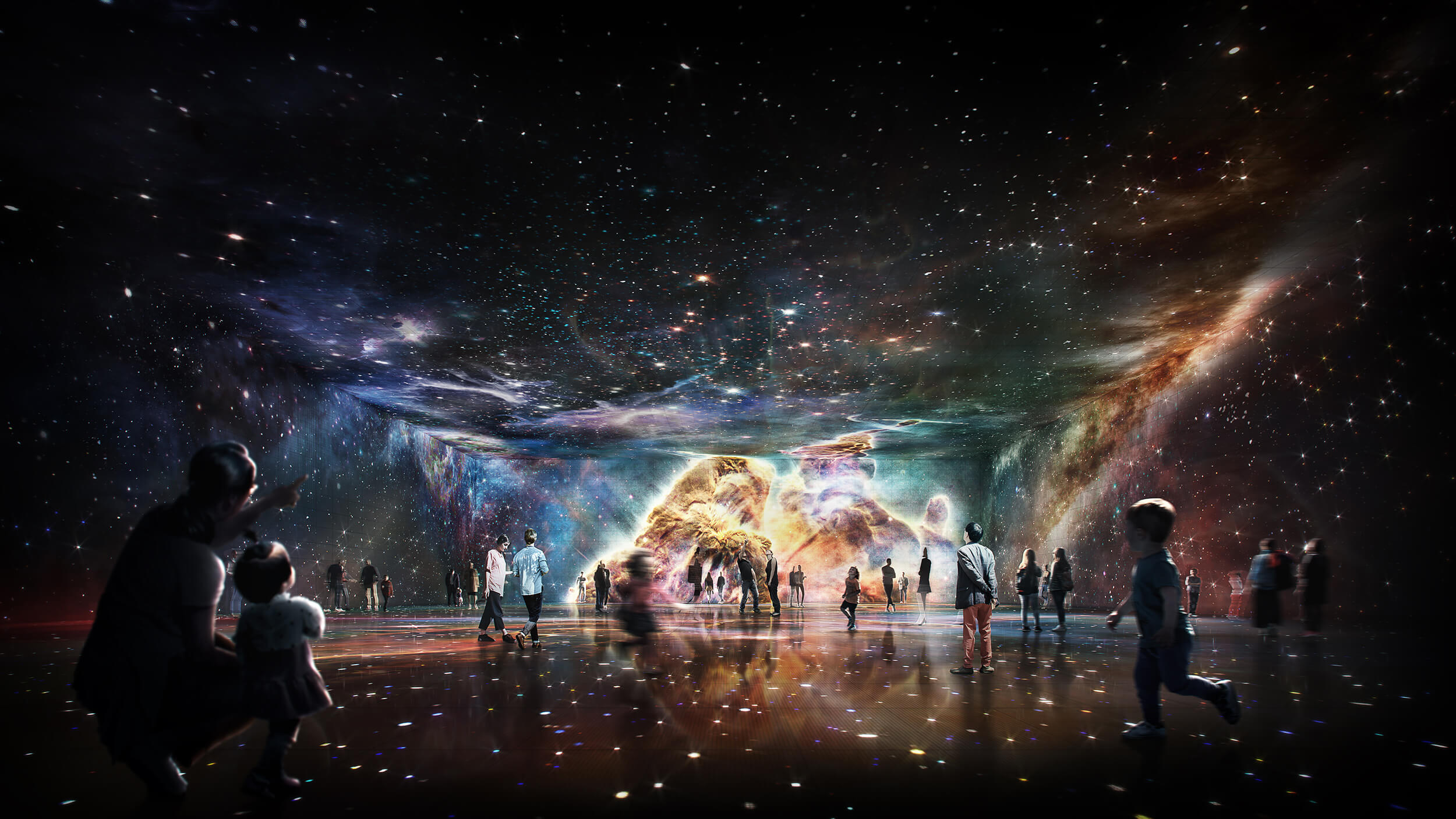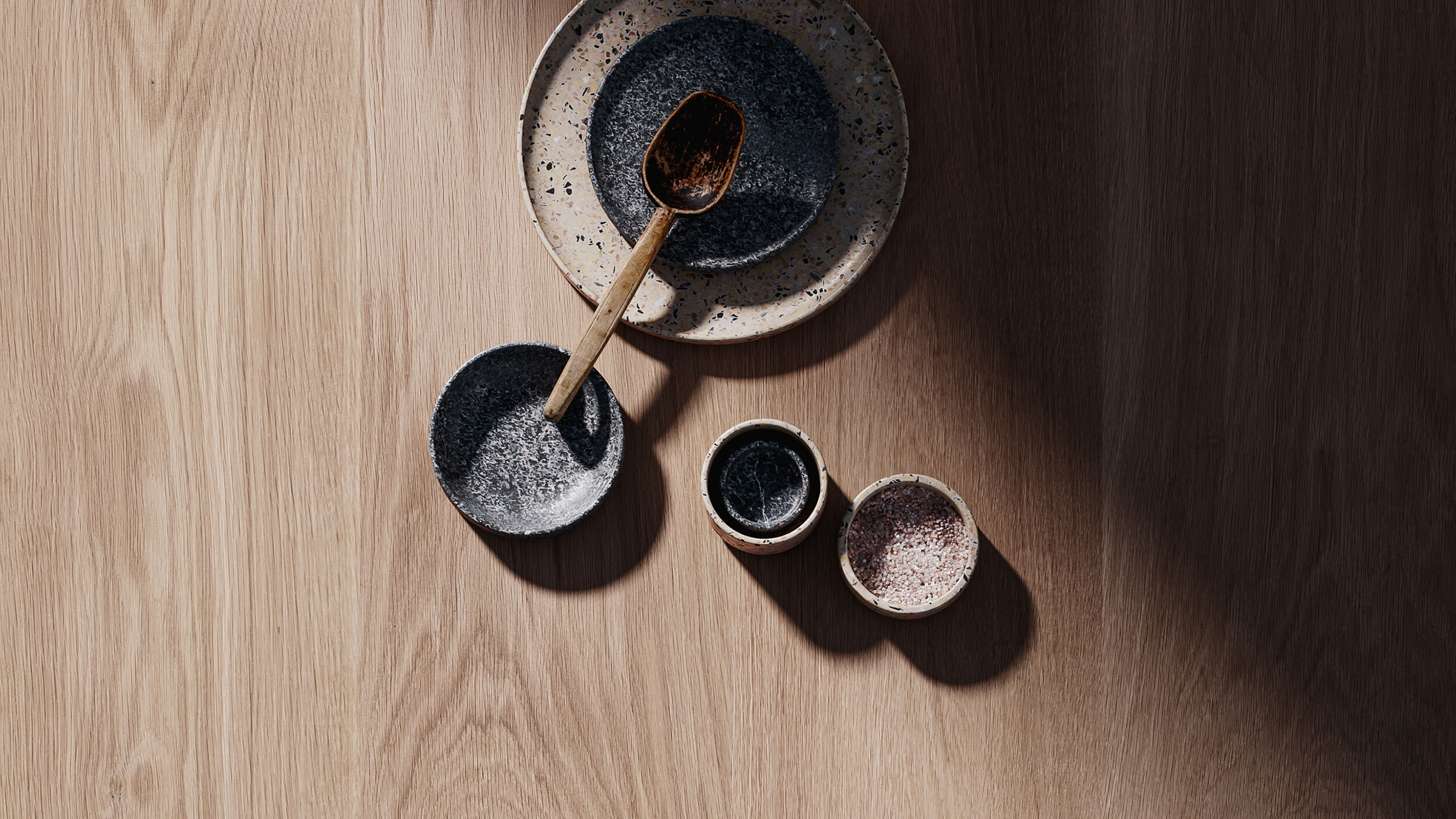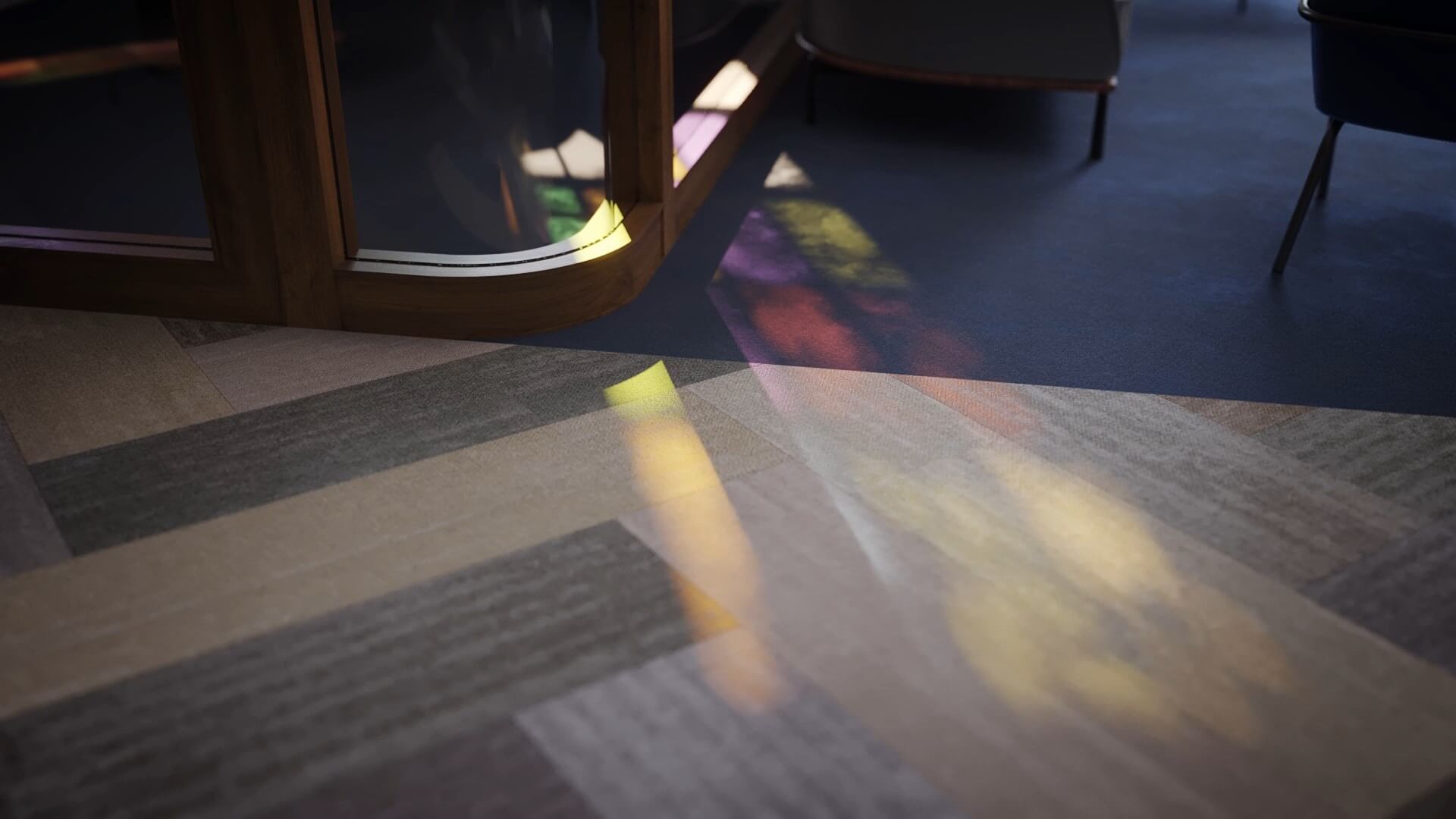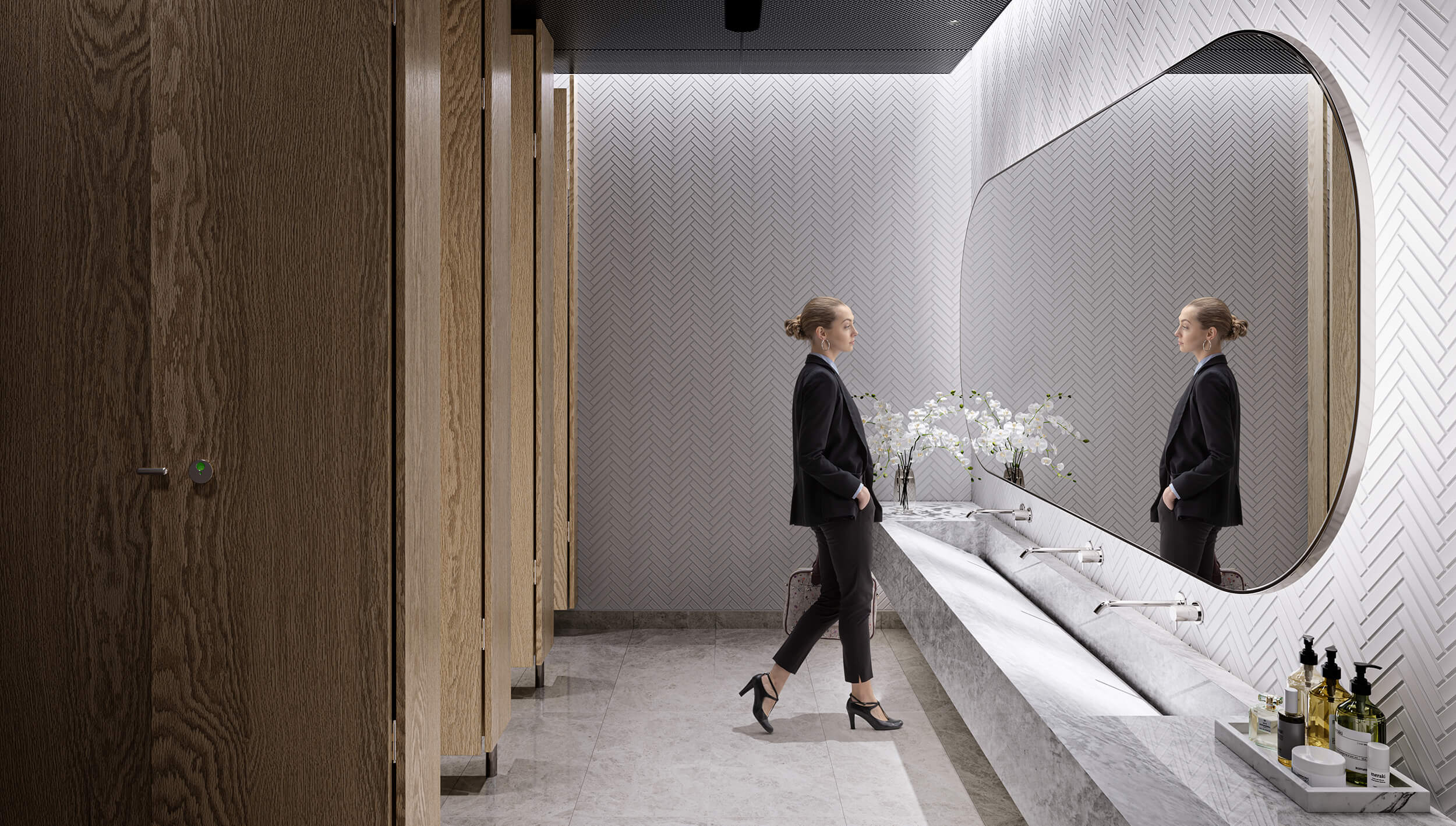Nulla Vale House — Q&A with Edition Office and MOGAMMA
Edition Office:
(Kim Bridgland, Director)
— What is the history of the project? Specifically, when did the idea come about, who was involved and what was the driving force of the concept?
The idea of this house began as a speculation for how to bring into heightened awareness our ages old relationship between shelter and landscape. A house was designed within the dunes of Rye’s back beach, a wind-swept yet powerfully delicate site. Behind the roar of the crashing waves, the roof form of the house would perch upon the dunes, creating a sequence of interior spaces held between the stepped lofted ceiling volumes and the carpeted canopy of the Moonah scrub. This was a real site, and an invitation to potential purchasers, however the house never found its ideal occupant, the design was never allowed to be realised. The idea house quickly became a lost project.
— What was the motivation to keep this project alive with MOGAMMA?
This project distilled a number of areas of exploration for our studio; the power of an elegant plan, the creation of presence within interiors volumes, prospect & refuge, shadow, and the relationship of an existing site and a modifier, a conditioning object within its boundaries that redefines how they both might be translated. An invitation from MOGAMMA provided a moment of generosity and possibility, an opportunity to work together to allow the translation of the ideas & semiotics of the design into an emotionally tangible encounter. In this collaboration hope to give this home a life, and to allow it to exits in narrative, conversation and in image. And through that encounter of narrative and image for the house to become real in memory.
— Tell us more about the design of the house and unique features that make it special.
The project is a one-bedroom home, a dwelling for only 1 or people with a fundamental objective of facilitating an immediate, and unmediated relationship with the rugged, granite and dry grass landscape of the Macedon ranges.
The cast concrete roof is held aloft as a broad tent, creating primary sheltering volumes within from which the interior spaces inhabit. The internal ceiling is stepped, allowing shadow to linger within the creases, allowing the texture and contrast of shadow and light, the play of chiaroscuro to respond to the changes of light patterns that play across hills and plains of the surrounding landscape.
This elemental concrete roof form sits upon a series of walls, themselves built up from a series of rammed earth beams, stacked one upon the other to form a thick textured wall.
The floor is mechanically compacted earth over the structural slab. A continuation of the dusty floor of the surrounding plains and the earthen walls of the house.
The pool is a subterranean retreat. A pool terrace rest under the house, heading into the water which bounces and reflects the light of the northern sun as it pierces deep into this earthen hollow. The pool hollow rises up to the sky with a series of deep steps, a site for informal seating and gathering at the pool edge. The rear side of this pool structure positions a set of stairs to face directly into the warmth of the sun and into the expanse of the wide horizon.
The plan is divided into primary and secondary spaces. Secondary spaces are held within parallel pairs of the stacked rammed earth walls, containing the utility of stair, kitchen store, study and robe. The primary spaces then occupy the area between the paired walls, with their external sliding doors extending beyond their external vista, and racking up between the paired walls of the utility zones, allowing the principal spaces for cooking, eating, resting and bathing to be opened fully to the outdoor elements, embracing a life of permanent camping within the deep shelter of the cast concrete roof overhead.
— Why did you choose to visualise the house in a different setting and what symmetries exist between the design going from a remote coastal location to a rural country landscape?
When recommitting a gaze back to the project, it became clear that this collaboration allowed a new thing to come into being. Not a facsimile of the original design, but something that has the immediacy of new creation. For this reason, it needed to meet itself anew, through the need to mediate an entirely different landscape.
— What was it about the Nulla Vale location in the Macedon Ranges that felt like the right fit for the house?
Much of the house remains the same, though without the steep topographical change of the dune site, and the tiered canopy of the coastal scrub with its powerfully distinct spatial binary of above canopy and below. While both sites are old, each of them simultaneously occupying deep time and a clearly shifting present, the Nulla Vale site and its granite geology brings a stillness to that age that breathes a different voice to heartbeat rhythms of the coastal breaking waves. The stillness and quietude of this Macedon Ranges asked for a stronger coupling with the ground and of the connection to big skies and far horizons.
— What do you find interesting about this particular lost project and its importance to your practice?
A central mode of inquiry within the Edition Office studio is how we might generate heightened spatial and social encounters through highly distilled spatial and formal relationships. Through this clarification of the underlying spatial and material principles of a project we hope to facilitate a relationship to place, to country, to context. This particular project begins with ground, the compacted earth floor, upon which is established a clear pattern of stacked rammed earth beams, rising upwards in a stacked configuration to become walls. These heavy walls arrange between them a sequence of major and minor spaces that make up the rooms of the house. Principal spaces of sleeping, bathing, living and the cooking and sharing of food are held between the broad lofted volumes of the stepped ceiling and the broad horizon. The supporting intimate spaces of robe, stair, study, and store and held within the space between a doubling of the heavy walls. The timber framed sliding doors slide out from the primary spaces and stack up across the face of the minor paces, allowing the former to become outdoor rooms with only the elemental shelter of the canopy overhead to provide comfort from the vastness of the big sky overhead.
— What do you want the public to take away from the project or learn about the architecture with these images?
It would be a wonderful outcome if people coming across these images would find a connection to that place, and through the architecture might prompt a different way of seeing and understanding that country. And through that relationship to place they might reconsider their relationship to the country and landscape that surrounds them.
— What do you wish to do with these images from MOGAMMA now the design has been fully visualised?
We would hope these images would sit beside those of the other completed projects from our studio, and be seen as documentation of our practice and its outcomes.
MOGAMMA:
(Martin Houra, Managing Director)
— What was the motivation to connect with Edition Office and offer to visualise this project?
One of our goals at MOGAMMA is to be a little different, to work on those unique, bespoke projects out there that are not only exciting to create, but are inspiring to see. We love dancing between the real and unreal world and lost projects somehow hold your gaze a little differently, allowing you to look at your surroundings with a dreamlike sense of wonder and appreciation.
After working with Edition Office on the NGV Contemporary design competition we were highly impressed by their thought process and approach to architecture. They have a unique observation of materials and understanding of how different tactile qualities interact not just within a space but as an extension of the land it occupies.
When we approached Edition Office with the idea they were keen to be involved and their speculative coastal residence, Nura Rye, was an ideal proposal to resurface. With heavy schedules on both sides it was challenging to steal the necessary time, but over the course of 2022/2023 together we were able to bring this lost project back to life and transform it into Nulla Vale – a breathtaking house reawakened in the Macedon Ranges that can now be seen in glorious detail across nineteen images.
— What are the most interesting differences between visualising a lost project and an active proposed development?
One of the most exciting aspects of the reborn project was that the usual constraints that come with visualising developments didn’t apply – we were able to collaborate and exchange ideas more freely. Specifically, how to highlight the house in a new way and visualise particular features saw us working as true collaborators with breathing space to have relaxed back and forth, rather than the natural restrictions that come into play from a deadline driven dynamic. We were able to be somewhat imaginative with where the house could reside, which allowed Edition Office to build on elements of the original design to fit new goals, whilst staying true to its underlying ideas and purpose. The fact we were able to take their ideas and harmonise it with a completely new location was a thrilling and meaningful opportunity.
— How was the new location chosen?
My family and I spent our 2021 Christmas holidays in the Macedon Ranges, and upon revisiting the project early in the new year, it seemed like the perfect vast and magnificent landscape for the house to make its mark and take form.
I spent considerable time on location recce to hone in on an area within the Macedon Ranges that would fit the breadth of the house whilst still being able to feature the beautiful dry and rugged land of the Dja Dja Wurrung, Taungurung and Wurundjeri Woi Wurrung Peoples. With its majestic snow gums, rolling fields and iconic granite boulders, Nulla Vale soon became the fitting parallel universe where the Nura Rye house could reawaken and find its home.
Technically speaking, the biggest challenge was not knowing what exact views we might need for the angles we selected with Edition Office. Although we had agreed to certain views, the amount of possibilities was nearly endless. As a studio, we had to find a way to capture the site photography whilst still maintaining a sense of coherence and narrative throughout the imagery. Taking advantage of an overnight photoshoot, I was able to capture hundreds of photos across multiple locations and at various times of the day, which allowed us to have as much freedom as possible.
In the studio, all the location shots were then triaged and paired with every view to achieve the optimal level of consistency, as if the house always did have a set location in the world that the photography was taken from. It was essential for us to create a sense of belonging, so that people coming across these images could emotionally connect with the environment and get a taste of what it’s truly like to be there.
— Were there any outstanding technical aspects to visualising this project?
Portraying materiality correctly was the number one priority in this project. Considerable time and effort was put into R&D of the rammed earth material, as well as the aged bronze and other major materials used throughout the house. The rammed earth specifically needed to look imperfectly perfect and work across the extensive area that the house occupies. There had to be enough versatility in the detail and substance to work from every angle so it looked natural from a distance as well as intimately up close.
— How was the styling and tone of the images set?
As the interior is inherently connected to the vast landscape and open plan of the house, the styling, time of day and overall image compositions, as well as the location of all the objects and furnishings within these spaces, had to be carefully considered.
The interiors were styled in a collaborative manner between Edition Office, MOGAMMA and Anouska Milstein from Studio A.mi to make sure all selected objects not only fit the house and it’s idea of an open shelter within a site, but also to support the narrative of a lived in space, where occupants can feel at home amidst the natural light and mood transitions of the landscape.
A long exploration was undertaken to find special pieces that only exist in either very small editions, or are one of a kind. Most notably these include the Aluminium lamp IV from the Barbar series by Studio Anne Holtrop, Slug cup by Softedge Studio, Dondolo Swinging Garment Rack by Francesca Torzo and Sterling Silver Coffee Pot Set by Anton Michelsen Oluf Stæhr-Nielsen.
In keeping with applying a delicate hand to the materials, we achieved an organic yet tailored look to the style of the space by modelling the large majority of the furnishings and objects from scratch. This is something we really believe achieves a uniqueness to the imagery and ultimately gives each room a special quality. This great attention to detail was crucial in making sure every newly created model carried all the necessary characteristics that the original pieces had, and was able to fit each scene seamlessly.
Case Studies
Residential
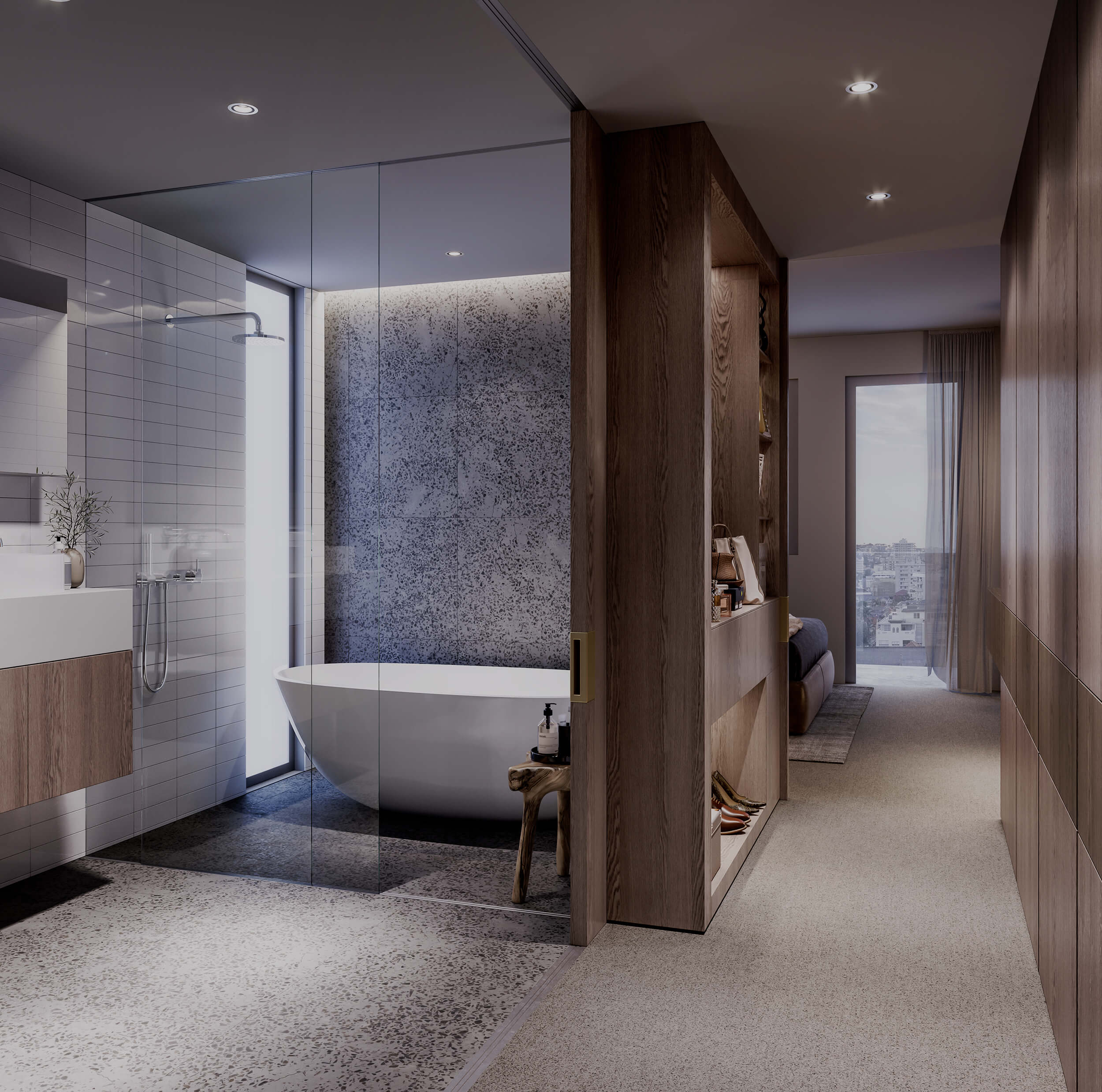
Commercial

Cultural & Public Realm
